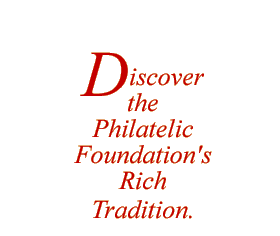 |
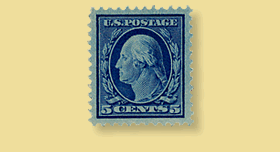 |
 |
 |
History >A Trip Down Memory LaneA list of all those have been involved with founding and sustaining The Philatelic Foundation since 1945 read like a "Who's Who" of Philately. Many of the most distinguished provenances of United States and World philately have their associations with our organization: Lichtenstein, Dale, Steinway, Boker, Hubbard, Grunin... the list is endless. World-class experts have been an integral part as well: Ashbrook, Neinken, Boggs, Bloch, Green... to name just a few. But how did this all come to be? 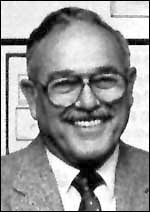
"To understand why it was established, we can start by talking about what it was like before The Philatelic Foundation. Suppose you were interested in buying a grilled stamp and you wanted to know if it was any good. The dealer certainly vouched for it ("This is the best copy of this stamp ever known"). At that point, if you were smart you would have said, "Can I hold it for a few days?" And you would have marched around as quick as your legs could carry you to every dealer you knew who you felt had any information on the subject, and you would say, "Would you take a look at this stamp, please? It's supposed to be a 15 cent Z Grill." One dealer might look at it and say it looked pretty good to him; then two more would say it looked pretty good. But the fourth dealer would say, "What a fake." At that point you wouldn't know what to do, and were left flying by the seat of your own pants. You weren't educated enough to know the Grills by yourself, and you hated to pay the big price they commanded as the price of your education. This, of course, set you out on the track of which dealers you could trust and which dealers you couldn't trust. In other words, you were out there on your own. It's as if you were trying to get a college degree by going to the library and talking to people, without having anybody around to explain some of the fine points of what you were reading, or clearing up the information in the books that was hard to understand. It was for this reason that the Foundation was born... as an educational institution. That's what the charter of The Philatelic Foundation is all about. We are here to educate. To some people, we are only here to expertize, but the two go hand-in-hand. Ideally, if we could create enough experts, we wouldn't need an Expert committee." 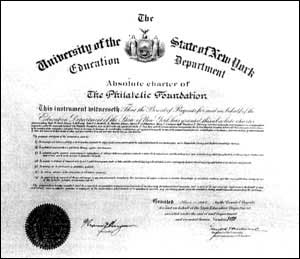
That's some of the "why" of the PF. Now, let's get to "who" and "when." The Philatelic Foundation was granted a Charter by the University of the State of New York on March 16, 1945, as a Non-Profit Educational Institution. The original incorporators were Hugh M. Clark, Alfred F. Lichtenstein, Harry L. Lindquist, Theodore E. Steinway, George R. M. Ewing, Robert L. Graham, Jr. and Malcolm Johnson. Mr. Lichtenstein's daughter, Louise Boyd Dale, also took an early and active role. Initially housed on the fourth floor of the Collectors Club, the PF moved to separate quarters a few years later. The role of "Staff Expert" or "Curator in Chief" was filled by such notables as Wintrop Boggs, Kelly Stryker,Peter Robertson and William Crowe; today, Lewis Kaufman occupies that "hot seat." 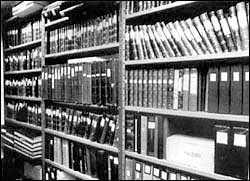
From the start, The Philatelic Foundation was serious about assembling the best references (both stamps and literature) that were available. To that end, it was fortunate in being able to acquire the reference collection of John Luff, built over half a century and encompassing the whole world to about 1948 (the PF wouldn't issue certificates for stamps printed after 1948 for many years, not then having suitable reference material). The PF also acquired the research notes and correspondence of Stanley Ashbrook, collections of Sperati and Fournier forgeries, a complete photographic record of the famous Caspary collection on its original pages, and continues to receive photographic records of major specialized collections. These holdings, together with thousands of years of collective experience on the part of the staff and the volunteer consultants (collectors, dealers and auctioneers alike), have made the PF's certificates the standard of excellence, accuracy and confidence in the philatelic world. From just a thousand certificates in 1945 to a rate of 12,000 to 15,000 annually now, the certification process is our main activity. And the results and records are available and have been used for serious research, everything from pin-pointing new classic plate varieties that have been included in the standard catalogs, to uncovering and helping stop fakers and forgers and manipulators of stamps and covers. The Philatelic Foundation today truly fulfills the vision of its founders. It deserves the support of every serious philatelist. Become a contributor, send us copies of your latest philatelic handbook or monograph, offer to come in and discuss areas in which you are the recognized authority... There's a lot of ways you can be part of The Philatelic Foundation family! We have posted a few articles on people who were crucially involved in the early years of our organization, as listed below. |
The Philatelic Foundation is located at 341 West 38th Street, 5th Floor, New York, NY 10018 Copyright 2005 - by The Philatelic Foundation, all rights reserved.
|
| Home | What's New | Expertizing | Why Expertize? | History | Educational Resources Publications | Who's Who | Become a Contributor | Contact The PF Application for a Certificate |